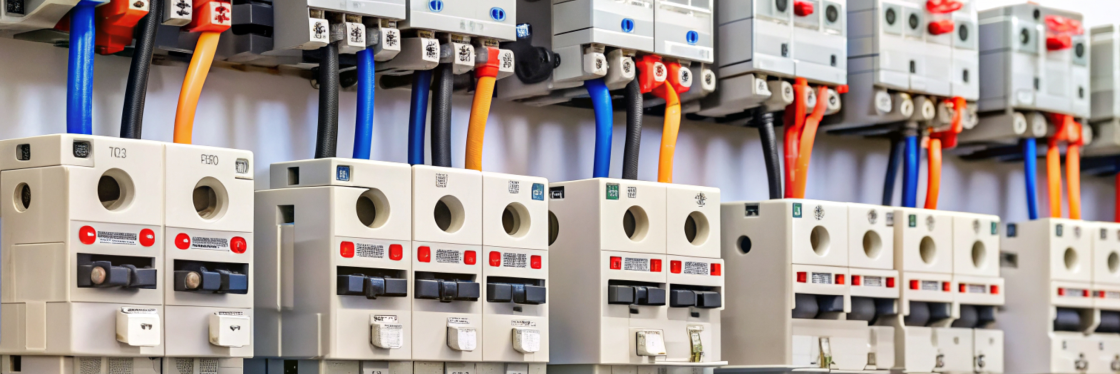Branded vs Unbranded Switchgear: Risks & What You Need To Know
Table of Contents
- 1. What Is Switchgear?
- 2. What Makes Switchgear Branded or Unbranded?
- 3. Key Differences: Branded vs Unbranded Switchgear
- 4. Common Risks of Unbranded Switchgear
- 5. Benefits of Choosing Branded Switchgear
- 6. How to Identify Quality Switchgear
- 7. Actionable Tips for Safer Home Electricals
- 8. Conclusion: Is Branded Switchgear Worth It?
- 9. External Link Suggestions
- 9. FAQ
What Is Switchgear?
Switchgear is a vital part of your home’s electrical system. It controls, protects, and isolates various electrical circuits to ensure electricity flows safely and efficiently. Switchgear prevents electrical overloads and fires—making your daily life both safer and more reliable.
What Makes Switchgear Branded or Unbranded?
Branded switchgear comes from well-known manufacturers and follows strict quality and safety standards.
Unbranded switchgear may not disclose the manufacturer or cut corners on testing and certification.
Key Differences: Branded vs Unbranded Switchgear
| Feature | Branded Switchgear | Unbranded Switchgear |
|---|---|---|
| Safety Standards | Tested & certified34 | May lack reliable testing |
| Durability | Built to last, robust | Cheaper materials, fragile |
| Warranty | Usually included | Rarely provided |
| After-Sales Support | Available | Not guaranteed |
| Fault-Handling | Designed for overloads5 | May fail under stress5 |
| Certifications | Conforms to industry norms | Often missing |
Common Risks of Unbranded Switchgear
Unbranded or counterfeit switchgear may appear cheaper upfront. However, the risks can be serious:
Electrical Fire: Low-grade parts and poor insulation increase fire risk if a fault occurs.
System Failure: Unbranded products may fail to disconnect power during faults, leading to outages or equipment damage.
Shock Hazard: Without proper insulation or design, direct contact can lead to electrical shock or injury.
Non-compliance: Lack of certifications means increased legal and insurance risks.
No Support: Difficult to repair, no genuine spare parts, and no one to turn to when problems arise.
Fact: According to experts, overstressed or substandard switchgear is a leading cause of household electrical fires and major outages.
Benefits of Choosing Branded Switchgear
Reliability: Consistent performance, even in emergencies.
Certified Safety: Undergoes thorough testing, reducing the likelihood of failure.
Long-Term Value: Fewer replacements and lower maintenance.
Insurance Validity: Ensures compliance with most insurance policies.
Expert Support: Access to trained technicians and genuine parts if needed.
How to Identify Quality Switchgear
Look for:
Clear manufacturer name and model number
Certification marks—such as CE, ISI, or UL
Proper packaging (avoid mismatched logos or poor print quality)
Warranty documentation
Seller reputation and online reviews
Actionable Tips for Safer Home Electricals
Always choose certified switchgear from reputable brands.
Have a licensed electrician perform installations and inspections.
Ask for a test certificate or inspection report after major electrical work.
Avoid buying electrical components from unknown or suspicious sources.
Schedule periodic safety checks, especially if your home is older.
Conclusion: Is Branded Switchgear Worth It?
For any homeowner or renter, branded switchgear is a safer and smarter investment. While unbranded options might seem like a way to save money, the risks—fire, electrocution, and system failure—simply aren’t worth it. Always prioritize your safety and property by choosing equipment from reputable brands and insisting on proper installation and certification.
External Link Suggestions
FAQ
Q1: Is branded switchgear more expensive?
A: Yes, but it’s an investment in your home’s safety and peace of mind. The costs of failure or fire from cheap alternatives can be much higher.
Q2: Can I install switchgear by myself?
A: It’s strongly recommended to use a licensed electrician to handle installation—safety regulations and insurance usually demand it.
Q3: Will unbranded switchgear void my home insurance?
A: It can. Many insurers require certified components for claims related to electrical accidents.
Q4: How often should I check my switchgear?
A: Ideally, have a professional inspect your system every 1-2 years, or after any major renovation.
Q5: What are the signs of failing switchgear?
A: Frequent tripping, buzzing noises, burning smells, or visible damage. If noticed, switch off the mains and call an electrician immediately.
